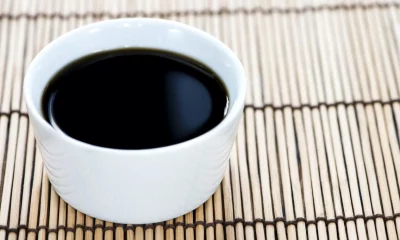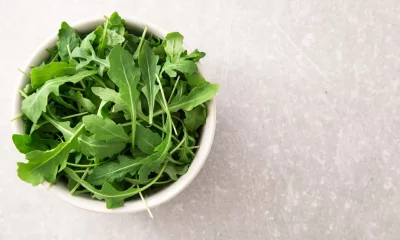Health
12 Benefits of red tea and side effects
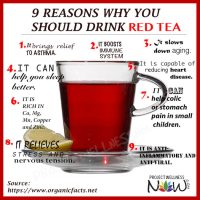
Discover the 12 shocking health benefits of red tea and side effects.
The benefits and healing properties that consuming red tea provides for the body are synonymous with well-being and health since it is rich in antioxidants and also helps prevent certain diseases, which from its conscious consumption will regulate the immune system.
Red tea is not very popular in the East, but Western culture considers it a long-lived elixir due to its favorable properties for the body.
This tea is part of traditional Chinese medicine, it is a healthy tradition for the prevention and treatment of multiple diseases.
What is red tea?
Red tea leaves originate from Yunnan province, China.
For its production, the tea leaves are dried and rolled, followed by the fermentation process and microbial oxidation.
Long storage and unique fermentation of red tea or Pu-erh (also known as that) enhance its flavor and enrich the flavor.
Therefore, before buying this tea, you have to take into account the verification of the origin, the processing method, and the storage information, as it can make a difference in the color, the taste of the red tea.
History of red tea
High in the mountains of Yunnan, China, in an area believed to have been the birthplace of tea some 4,700 years ago, are groves of ancient tea trees.
These trees, some of which are 1200 years old, flourish naturally in unspoiled temperate conditions.
They are mainly cared for and harvested by two Chinese minority ethnic groups, Dai and the Aini.
Dai and Aini harvest a large-leaved version of the tea tree, Camellia sinensis var. assamica) native to the southwestern region of Yunnan China (Yunnan Dayeh).
The high quality of red tea is coveted and hoarded by tea connoisseurs in China and Asia.
Relatively small quantities of red tea are left to be shipped to tea lovers in the West.
Red tea is an undiscovered secret treasure for many outside of Asia.
The red tea or also called Pu-erh is named after a city called Pu-erh located in the center of Yunnan.
There, all the teas produced from the nearby mountains were marketed.
To facilitate transportation, the teas were compressed into cakes or bricks and transported to different parts of China and Asia by horse caravan.
Later, all the teas marketed in this city came to be known as Pu-erh tea.
Properties of red tea
The latest research shows the effectiveness of this tea to reduce cholesterol, triglycerides, and sugars in the blood, to counteract hypertension, overweight and aging, and facilitate digestion by regulating the intestinal bacterial flora.
It counteracts stomach acid and has a positive effect in cases of gastroesophageal reflux.
It is considered the blood eliminator because it helps eliminate toxins that are assimilated with food.
It has been confirmed to have significant anti-sclerotic properties that reduce the risk of dangerous atherosclerotic plaque formation and it also has strong effects. antifibrotic.
Red tea acts as an anticancer agent and, in the same way, it can be of great help as a regulator of body weight, especially if it is inserted simultaneously with a diet rich in vegetable fibers and flanked by a regular physical exercise program.
Main components of red tea
It can be affirmed that Pu-erh tea has significant healing and protective properties accentuated throughout the gastrointestinal tract due to the microorganisms and the processed catechins (antioxidants) contained in it.
The main organic components of red tea are flavonoids and more precisely catechins and their derivatives. The most important are:
◦ Epigallocatechin gallate (EGCG).
◦ Gallic acid (GA).
◦ Epicatechin (EC).
◦ Galocatequina (GC).
◦ Epigallocatechin (EGCG).
◦ Gallocatechin gallate (GCG).
◦ Epicatechin gallate (ECG).
◦ Quercetin.
◦ Kaempferol.
◦ Myricetin.
◦ Proanthocyanidins.
◦ theobromine.
All of them are very powerful antioxidants with countless beneficial and protective properties.
For these reasons, you should take advantage of all the beneficial properties of this tea, and, in synergy, it can help you lose weight.
It facilitates digestion to reduce the risk of cancer, keep cholesterol and blood glucose levels under control, and help us keep our cardiovascular system safe against the risks of heart attack and stroke.
That is why it is important if you have the possibility of including red tea in a daily diet, it would be helping our body and immune system to keep us healthy and protect us from external attacks by viruses, bacteria, and pollutants.
Health Benefits of red tea for the body
The health benefits of red tea for the body are used by many people to combat and prevent some common ills that can be generated since this is a stimulant of the immune system, therefore, it helps to prevent the appearance of colds, colds, weakness among other
1.- Improves oxidation
Red tea contains antioxidants, which can help prevent free radical damage. Left unchecked, free radicals can lead to disease.
2.- Antibacterial action
The antibacterial properties can help protect the body from harmful bacteria, it can also be used topically to help treat mild illnesses caused by bacteria such as acne.
3.- It is anti-inflammatory
The anti-inflammatory properties of red tea can help relieve redness, swelling, and other irritations.
They can also relieve pain caused by inflammatory conditions, such as arthritis.
You can apply red tea topically to treat inflamed skin or drink a cup or two to help the body heal from the inside out.
4.-It can help prevent photoaging.
The action of red tea can even help protect the skin from photoaging or signs of aging caused by sun damage.
For many, drinking a few cups of red tea has become part of a skincare routine that already includes scrubs, moisturizers, and sunscreen. Red tea can also be used to make a facial toner.
5.- It can help reduce body toxins.
Red tea can help break down and eliminate toxins from the body.
This includes toxins known to contribute to weight gain.
You can consume red tea when you want to have a cleansing and detoxifying effect on the body.
6.- Helps indigestion.
A cup of red tea may be exactly what you need to improve digestion and ease stomach ailments.
It has been shown to help balance bacteria in the stomach and intestines and help the body digest heavy meals.
7.- It can help reduce stress.
Red tea can help reduce stress by regulating and protecting the nervous system.
The gamma-aminobutyric acid (GABA) found in it has also been shown to reduce anxiety levels, so it can relax and absorb stress.
8.- Improve the quality of sleep.
Although red tea contains caffeine, it can help improve the quality of your sleep.
Due to its effects on anxiety, it is believed that it can help calm the mind so that you can walk away peacefully.
It is also said to promote the production of melatonin, which can help regulate your sleep.
9.- It can help lower cholesterol.
Not only can red tea help lower cholesterol levels, as its protective benefits can also help improve your overall cardiovascular health.
10.- It can help alleviate the symptoms of metabolic syndrome.
Drinking red tea regularly can help ease the symptoms of metabolic syndrome.
It has been shown to lower blood sugar, reduce obesity, and boost immunity.
In addition, it reduces cholesterol and prevents free radical damage.
11.- Control blood sugar.
This powerful control of the presence of sugar in the blood is especially important if you already have diabetes or want to prevent
12.- It can help with weight loss.
Red tea helps promote weight loss, and it can be a great substitute for sugary drinks.
How to prepare red tea
When you want to make red tea at home, you generally require 3 to 4 grams of tea leaves per cup of water.
You can adjust this amount depending on how strong you would like your tea.
Once the leaves are obtained, the following steps are performed:
- Place the red tea leaves in the strainer of a teapot.
- Pour the freshly boiled water into the pot and it should turn a bit.
- This water is discarded to remove any impurities from the tea.
- Fill the kettle with more boiled water and let the tea steep for three to four minutes.
- Now to have your tea and enjoy it!
You can reuse the tea leaves a couple of times.
Note: Red tea generally contains 60 to 70 milligrams of caffeine per cup.
Be aware that most of the caffeine will come out in the first water.
If you decide to make a second or third pot with the same leaves, the tea will contain less caffeine.
Possible side effects of red tea
Red tea is generally considered safe to consume.
Most people can safely drink up to 5 cups per day without experiencing any side effects.
Most of the potential side effects and interactions of tea are due to its caffeine content.
With this in mind, pregnant or lactating women should be able to safely drink up to 2 cups per day.
Children can also consume red tea in small amounts.
Health
13 Benefits of sorrel and side effects

Table of Contents
Health
Benefits of hyaluronic acid for acne
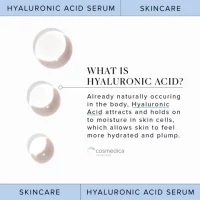
- Methods of treatment
- FREQUENT QUESTIONS
- What is the main indication of hyaluronic acid in acne scars?
- When is the effect of hyaluronic acid noticeable?
- How is hyaluronic acid applied?
- How many hyaluronic acid sessions are needed to treat facial acne scars?
- How is the face after doing the filling session?
- Is it a painful procedure?
- Can fillers be combined with other acne scar treatments?
- Is the effect of hyaluronic acid definitive?
Discover the benefits of hyaluronic acid for acne.
In most acne scars there is a loss of skin volume ( atrophy ), which gives the area where they form a depressed or “engraved” appearance.
This atrophy is the product of a lack of hyaluronic acid and collagen in the dermis, the intermediate part of the skin, responsible for giving the turgidity, volume, and elasticity of healthy skin.
Methods of treatment
There are different methods to treat atrophic scars, which we could classify into two different groups according to their speed of action:
· Immediate effect. They are called fillers, biocompatible substances that can be injected into the skin to give volume to areas that have lost it.
Among them, those of hyaluronic acid, polylactic acid, or calcium hydroxyapatite stand out among others. Its turgid effect is immediate, filling cavities, furrows, and atrophic areas of the skin with very natural results. The duration of these materials is limited, so periodically (every 6 – 18 months ) it is common to practice a new session.
· Delayed effect. It implies that they promote the synthesis of collagen and ground substance of the dermis. It is worth mentioning the fractional lasers (ablative or non-ablative) and the intermediate and deep peels.
The main advantage of these methods is that their effect is permanent once the optimal point of improvement has been reached, which is not immediate but after practicing several sessions of the procedure.
Hyaluronic acid is indicated in the treatment of atrophic, depressed, and ice-pick acne scars. There are different densities of hyaluronic acid, designed to treat different forms of atrophy or loss of volume.
For the treatment of moderate or ice pick acne scars, it is useful to use low and intermediate densities; and to recover a large volume in especially atrophic areas, it is possible to use higher densities to cover the maximum repertoire of defects.
The main advantages of using hyaluronic acid lie in its immediate action, its durability, its biocompatibility, and its minimal allergenic potential. This molecule can fill in atrophic scars, providing optimal volume immediately and in the short term, promoting collagen synthesis in the long run.
In this way, the irregularity on the surface of the skin is substantially reduced after the application of hyaluronic acid, improving the overall appearance of the skin in the treated area.
Another positive aspect of using hyaluronic acid is that it usually only requires a single application session. Likewise, fillers are one of the best tolerated aesthetic procedures since they have a minimal rate of adverse effects and the pain caused is minimal if a precise technique is followed. Slight erythema (redness) that lasts 2-4 hours after the procedure is common and can be reduced with the application of cold compresses.
According to studies published by Halachmi et al, the satisfaction rate and results in patients with atrophic acne scars and ice pick treated with hyaluronic acid are excellent.
The only limiting aspect of hyaluronic acid fillers is their duration. This molecule is naturally degraded in the skin, its effect persisting for 6-18 months depending on the density of hyaluronic acid used and the indication for which it has been applied.
Specifically, for acne scars, the duration of hyaluronic acid is the maximum possible, since it is retained within the fibrosis that partitions the scars. It should be remembered that, in the long term, this molecule favors the synthesis of collagen, so that the perceptible effect is progressively more durable as different sessions are carried out.
FREQUENT QUESTIONS
What is the main indication of hyaluronic acid in acne scars?
Its main effect is to fill in depressed scars and regularize the appearance of the skin surface.
When is the effect of hyaluronic acid noticeable?
The effect of hyaluronic acid is immediate and noticeable at the end of its application. Over a week or so, the hyaluronic acid settles in the applied area and the surface where it has been applied progressively becomes even more regular.
How is hyaluronic acid applied?
The procedure is performed in the Dermatology consultation through microinjections applied under the scars to be treated. An anesthetic cream is usually used before the session and it is very tolerable, with minimal discomfort.
How many hyaluronic acid sessions are needed to treat facial acne scars?
In general, if they are not very deep or extensive, one is enough.
How is the face after doing the filling session?
The corrective effect of hyaluronic acid is immediate. At the end of the session, most atrophic and depressed scars have recovered all or part of their lost volume. Immediately after the session, it is usual to see some redness in the treated areas and slight swelling, which usually lasts between 2-4 hours.
It is possible, although infrequent, that during the procedure a minimal punctual hematoma may appear in an injection area, which will disappear spontaneously over a week or so.
Is it a painful procedure?
Filling with hyaluronic acid after application of anesthetic cream is one of the most well-tolerated and appreciated aesthetic procedures, with an excellent satisfaction rate for the patient.
Can fillers be combined with other acne scar treatments?
Yes. They can be used concomitantly with ablative/non-ablative peels or lasers, or even botulinum toxin if desired. It is recommended, yes, to carry them out in different sessions.
Is the effect of hyaluronic acid definitive?
No. Although with each session there is a certain accumulation of the effect due to the collagen synthesis promoted by hyaluronic acid, it is advisable to perform a filler every 6-18 months depending on the indication and the area to be treated.
Health
10 Benefits Of Feijoa Or Pineapple Guava

Table of Contents
- What is feijoa or pineapple guava?
- Knowing the flavor of feijoa
- Nutritional contributions of feijoa.
- 10 health benefits of feijoa.
- How to eat feijoa?
- Discover the 10 Benefits Of Feijoa Or Pineapple Guava.
Feijoa can have a wide range of health effects, including aiding weight loss, improving digestion, lowering cholesterol levels, boosting the immune system, increasing bone strength, lowering blood pressure, optimizing nutrient absorption, balance metabolism, increase circulation, stimulate cognitive function and regulation of blood sugar levels, among other benefits of feijoa.
There are very few reported side effects, although allergies to this fruit do exist, and some reports of gastrointestinal problems and low blood sugar levels have been documented.
That said, for most people who consume this fruit in moderation, it offers far more health benefits than side effects, so there’s no running away from the benefits of feijoa.
What is feijoa or pineapple guava?
Feijoa has another name in many parts of the world: pineapple guava. Scientifically known as Acca sellowiana, the plant that produces this fruit is a shrub or small tree native to regions of South America, such as Argentina, Brazil, and Colombia. It is now widely cultivated for its sweet fruit, as well as for ornamental purposes.
The fruit is green and ellipsoid-shaped and is about the size of a plum or a small avocado.
The unique flavor and impressive supply of nutrients make feijoa highly sought after as it can have many different culinary applications, from an ingredient in smoothies to cocktails, desserts, chutneys, and cooked fruit dishes.
Knowing the flavor of feijoa
Feijoa has a very unique flavor, with sweet, sour, and bitter elements, which many people compare to guavas and pineapples, as its common name implies, but it also has a slight strawberry flavor. In some cultivars, there are very subtle notes of mint, which can increase as the fruit ripens.
To ensure the best flavor and flavor of the feijoa, the fruits should be collected the day they fall from the tree, as this indicates the ideal ripeness.
Before that, the taste is more bitter, while after the fruit falls, it can become too ripe and unpleasant to eat.
Nutritional contributions of feijoa.
Whether you are eating the fruit for its benefits or its exotic flavor, you will benefit from its impressive nutrient content.
The calorie content per serving (100 grams) is just 55, which is unusually low, this tropical fruit also contains significant levels of vitamin C (over 50% of your daily recommendation per serving), as well as a diverse selection of B vitamins. and traces of vitamin E, K, and A.
In terms of mineral content, feijoa contains moderate levels of copper, manganese, magnesium, potassium, iron, and calcium.
A single serving of this fruit also delivers more than 15% of your recommended daily dietary fiber, in addition to various phytochemicals, phenols, and antioxidants.
10 health benefits of feijoa.
People who regularly consume this fruit to make themselves available to the benefits of feijoa will receive health favors related to blood pressure, cholesterol, obesity, immune health, oxidative stress, metabolism, osteoporosis, indigestion, diabetes, circulation, cognitive function, and nutritional deficiencies.
1.- Increase immunity
With a strong supply of vitamins and minerals in the fruit, the benefits of feijoa allow regular consumption to give your immune system a much-needed boost.
Vitamin C can stimulate the production of white blood cells, the body’s first line of defense, while also acting as an antioxidant to search for free radicals; a single serving of pineapple guava has more than 50% of your recommended daily vitamin C.
2.- Regulates blood pressure
Potassium-rich foods are important for people who suffer from high blood pressure and therefore are at high risk for cardiovascular disease, atherosclerosis, and stroke.
Potassium is a vasodilator, which means that it can reduce stress on blood vessels and arteries, and generally relieve stress on the cardiovascular system.
3.- Digestion AIDS
High levels of dietary fiber (about 17% of your recommended daily fiber per serving) mean that this fruit is capable of optimizing digestion by stimulating peristaltic movement and enhancing nutrient absorption.
This can help ease symptoms of indigestion, constipation, bloating, cramps, and a general upset stomach.
4.- Reduces cholesterol
In addition to improving digestion, dietary fiber is also directly linked to lower cholesterol levels, particularly “bad” cholesterol, which can increase your risk of heart disease.
By removing this cholesterol from the arteries and blood vessels, it lowers the risk of blood clots, heart attacks, and strokes.
5.- Improve Cognition
The antioxidants present in feijoa have been associated with increased memory and retention, better focus, and a lower risk of neurodegenerative diseases, such as mental illnesses such as Alzheimer’s and dementia; antioxidants can seek out and neutralize free radicals in neural pathways before they can cause plaque buildup.
6.- Increases metabolism
The B vitamins are incredibly important for the overall functioning of the body, especially when it comes to metabolic activities such as the synthesis of proteins and red blood cells, the production of hormones, the stimulation of the functioning of the nervous system, and the generation of energy within cells. . Fortunately, feijoa benefits from moderate levels of numerous B vitamins.
7.- Improves bone strength
With significant levels of manganese, copper, iron, calcium, and potassium, this tropical fruit is very effective in increasing bone mineral density and helping prevent the onset of osteoporosis as you age. This can increase your energy levels and keep you more active and capable in your later years.
8.- Control diabetes
Research has shown that eating feijoa can help regulate blood sugar levels, due to its low level of calories and carbohydrates, which can help regulate the body’s production and release of insulin.
9.- Increase circulation
Although there is a relatively small amount of iron present in feijoa, it can still aid red blood cell production and circulation, while the metabolic boost from vitamin B can also stimulate blood flow. This means greater oxygenation in critical areas of the body and higher energy levels.
10.- Promotes weight loss
There are only 55 calories in a 100 gram serving of the feijoa, but plenty of dietary fiber and nutrients. Combined with the low level of carbohydrates, this means that the body will feel full and access a significant supply of nutrients without adding too many calories or sugar to your daily intake. This can have a positive impact on weight loss goals and avoid overeating or snacking between meals.
How to eat feijoa?
The skin of the pineapple feijoa or guava fruit is edible, but many people prefer to cut the fruit in half, such as avocado, remove the seeds, and then scoop out the soft, sweet pulp with a spoon. However, simply slicing the fruit, without removing the skin, can deliver even more dietary fiber.
The bitter taste mainly occurs near the skin of the fruit, so if you want a sweeter snack, remove the skin entirely. The fruit is at ideal maturity when the pulp of the seed is completely clear.
As this fruit tends to ripen very quickly, there may be some brown or discoloration near the center, but this does not mean that the fruit is rotten and that the creamy flesh is perfectly safe to eat.
Avoid eating pineapple guavas that are more than half golden on the inside, as they may have started to go bad.
-

 Food1 year ago
Food1 year ago10 + Benefits of carrot juice and side effects
-

 Benefits4 months ago
Benefits4 months agoThe Benefits of Joining Gym Lumolog – Improve Your Fitness & Health
-

 Health1 year ago
Health1 year ago50 Super Healthy (And Very Often Cheap) Foods
-

 Health1 year ago
Health1 year ago5 Shocking health benefits of kinkeliba and side effects
-

 Food1 year ago
Food1 year ago8 shocking benefits of leek juice and side effects
-

 Health1 year ago
Health1 year agoBenefits of guava leaves Sensually
-

 Weight Loss1 year ago
Weight Loss1 year agoChaz Bono weight loss secret
-
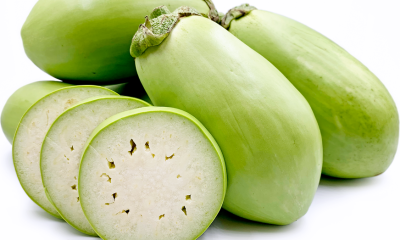
 Health1 year ago
Health1 year ago13 shocking health benefits of Thai eggplant





